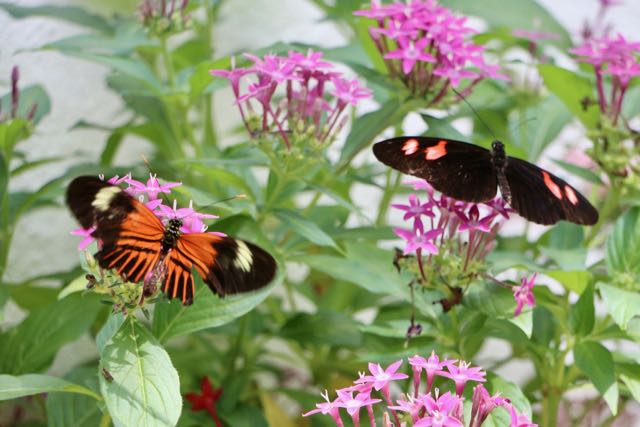While standing in line to have our photo taken at The Southernmost Point, we noticed several people with bright blue mylar butterflies clinging to them. Some on their hats, some on their shirts, some on backpacks, some on purses. These little butterflies where everywhere. We found out that just up the street and around the corner was The Key West Butterfly and Nature Conservatory. Many butterfly wearing people gushed about how cool this place was to visit, so, heck, why not give it a go?
We’re glad we did.
In San Diego we have a butterfly exhibit that makes an appearance once a year at The Wild Animal Park, excuse me, San Diego Zoo Safari Park. Having lived in San Diego since the ’80’s, I cannot bring myself to calling it by its new name. Same thing with the Del Mar Fair, excuse me, San Diego County Fair. Anywhoo, the butterfly exhibit in San Diego is quite large, and I’ve taken my girls when they were young. It’s really exciting when a butterfly lands on you by choice, calmly and peacefully fluttering its wings open and closed. Especially if it stays a while.
The conservatory in Key West is a permanent fixture, smaller in size, but greater in volume. There are butterflies of all sizes, types, and colors EVERYWHERE. It’s a flurry of colorful activity, beautiful flowers and greenery, pink flamingoes in a pond, turtles, and an exotic bird or two (or more).
It’s an educational center as well, set up mostly for school kids, with a few exhibits prior to entering the conservatory.
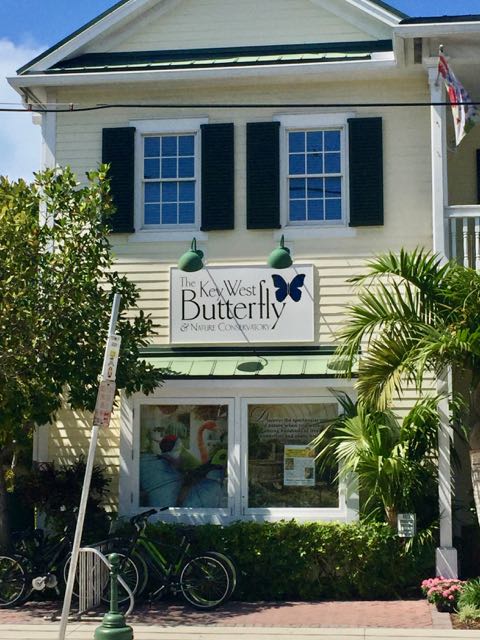
A small, unassuming front with a large gift shop marks the entrance.
The gift shop has every imaginable butterfly themed item for sale. From simple key chains to extravagant works of art. Proceeds support the conservatory, so this is one gift shop following an attraction where I was happy to spend my money.
An unlikely choice for four grown adults, we purchase our tickets and figure, hey, it’s something different.
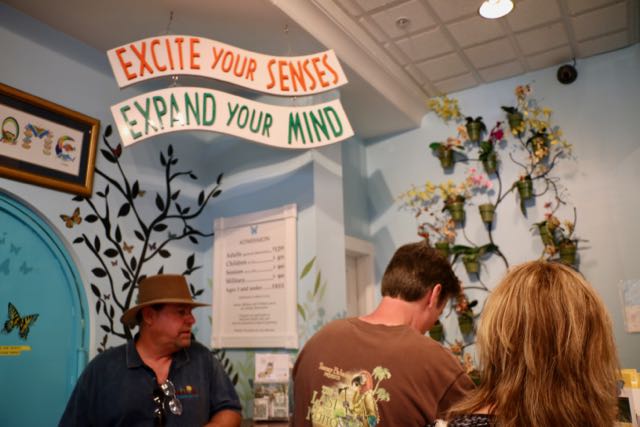
For the first time since we’ve been in Key West, we are doing what the sign says, sans alcohol (wink, wink).
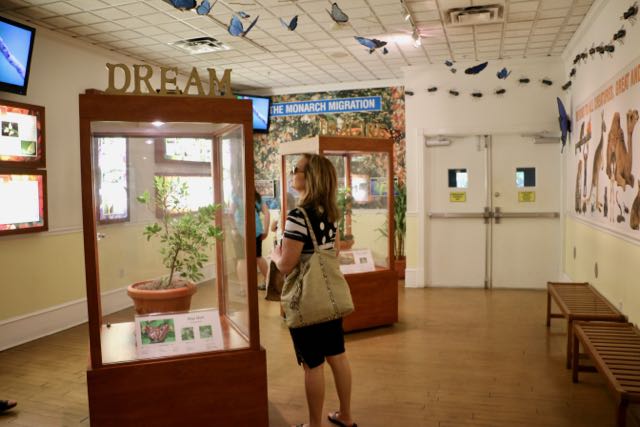
The introduction center prior to entering the conservatory is at your own pace.
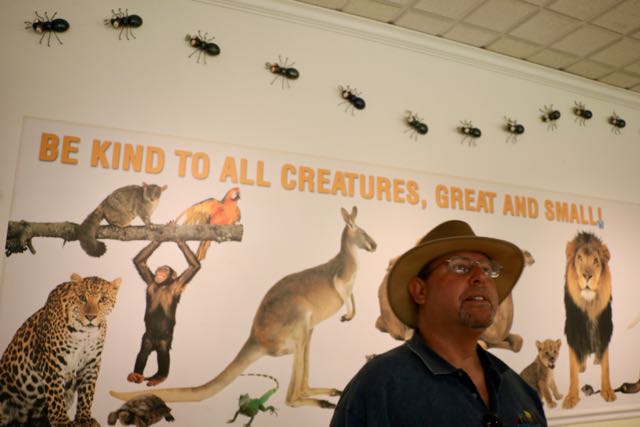
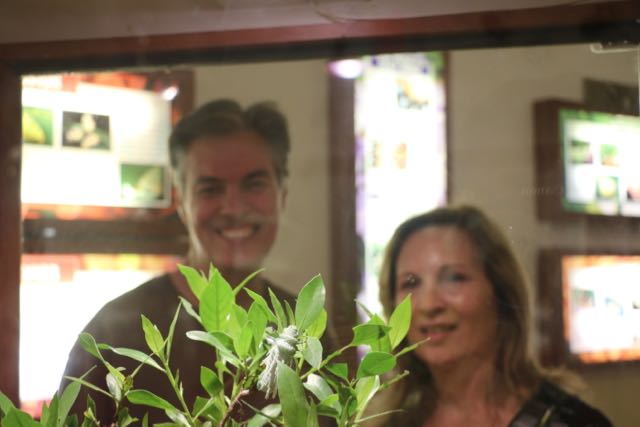
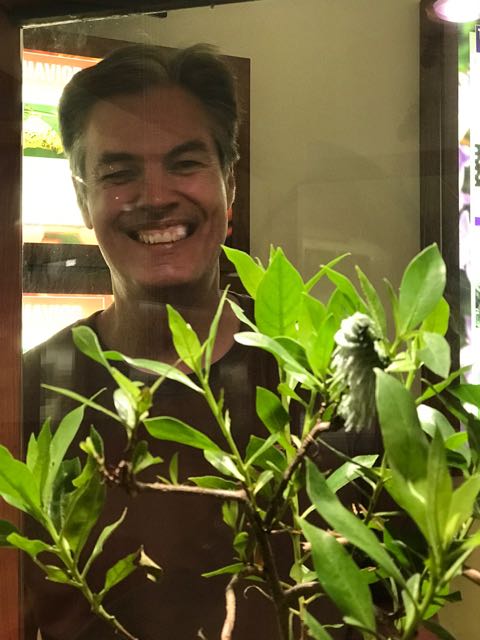
That spiny caterpillar is as large as it appears!
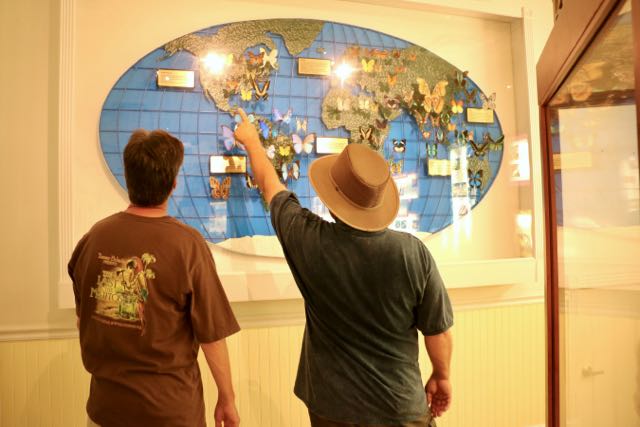
I only wish I’d taken video. Sometimes I forget to shift from photographic mode to video taking mode. I’m not an artist when it comes to photography, my daughter is, but I try.
The Blue Morpho butterfly was by far the most difficult to photograph. Dozens and dozens of them were flying all over the enclosure. This little creature seemed to be the most active, but once it landed, its wings remained tightly closed. When closed, one sees mostly various shades of brown with a circular “eye” pattern, as seen below. When the butterfly is ready to take off, you catch a glimpse of the beautiful blue that covers its open wings. While in flight, all you see is the stunning blue with an outline of dark brown. I snapped soooo many photos hoping to catch one in flight. Most were incredibly blurry, with only a portion of the butterfly in the frame. My payoff is further down the page.
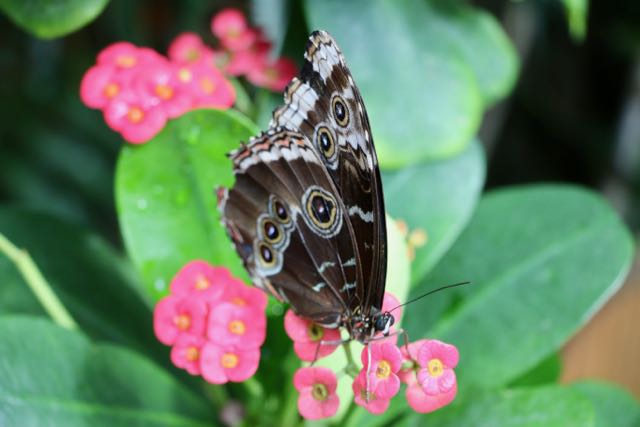
The difficult to capture in flight Blue Morpho.
My apologies to butterfly aficionados everywhere, but I do not know the proper name of the rest of these winged beauties.
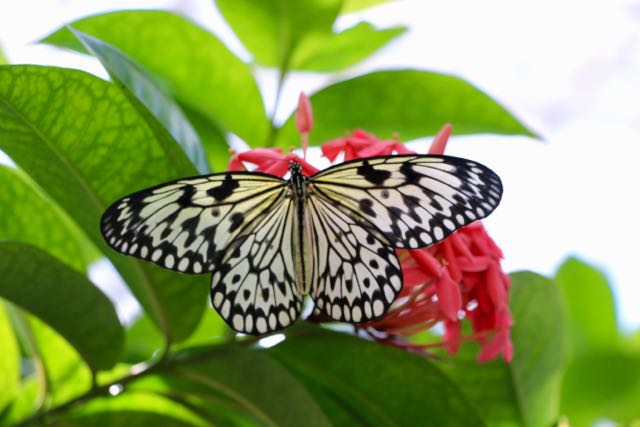
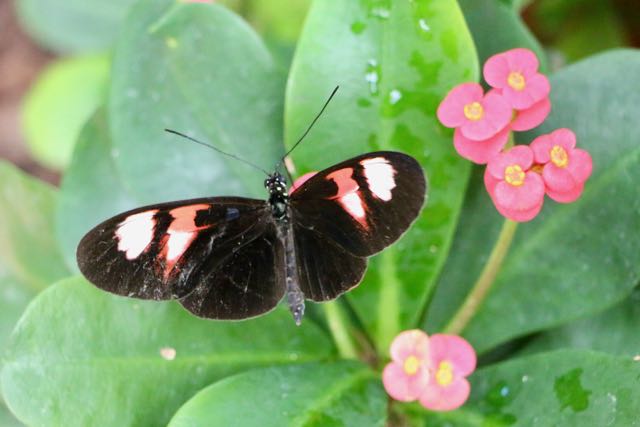
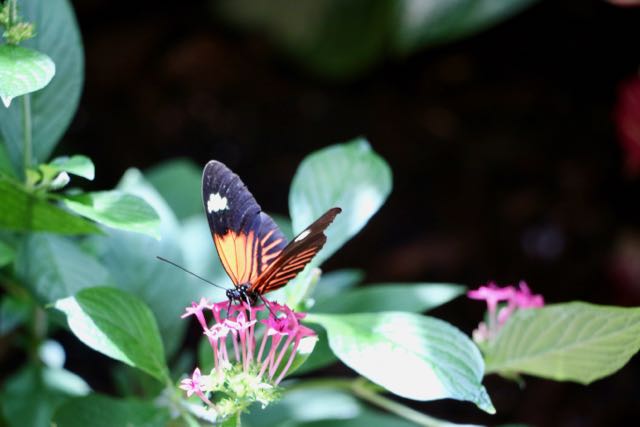
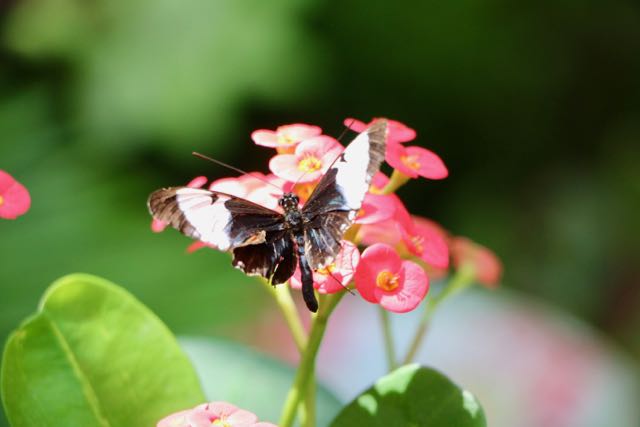
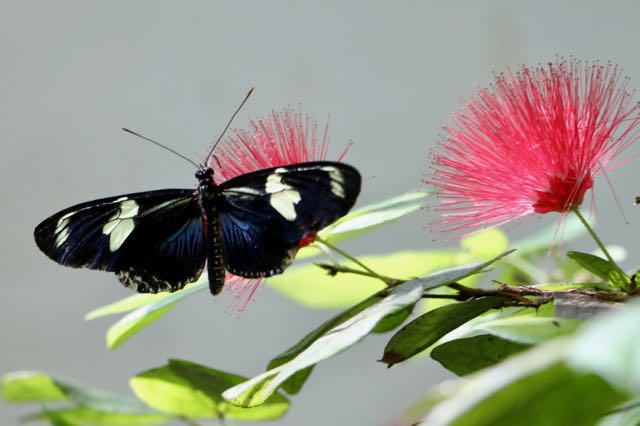
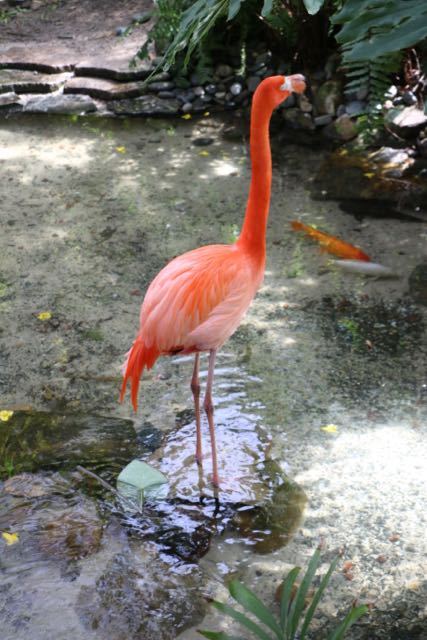
I’ve seen flocks of flamingos at the zoo, and never did I realize just how loud their squawk can be!
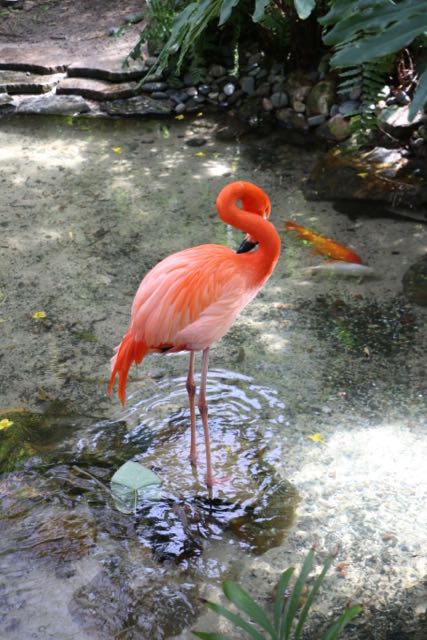
This one spent most of its time in this position.
Curiosity got the best of me, and I read far too much at way too late an hour to find out why a flamingo curls its neck. I thought it might be how they sleep. Well, I found they sleep with their heads resting on their backs, and the more socially aggressive flamingos rest their heads on the left side. Studies show that they often stand on one leg presumably to regulate body temperature. To feed, flamingos draw in sand and soot, and their beaks are specially designed to filter the crustaceans from the dirt. Flamingos spend so much time wading in water that they lose a great deal of body heat, and one less leg in the water means one less cold bird. So, now you know a little more about flamingos, and still neither of us know why a flamingo curls its neck to an “S”.
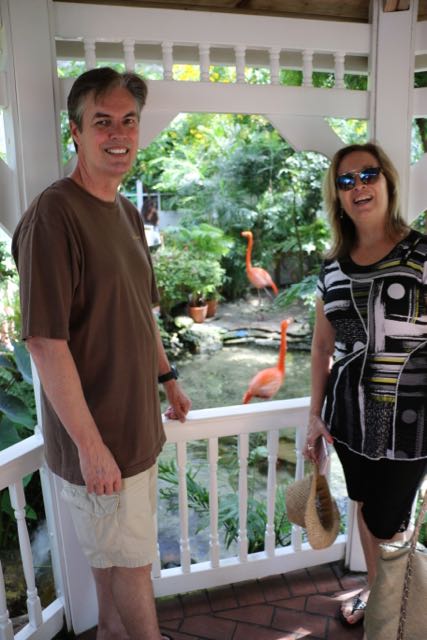
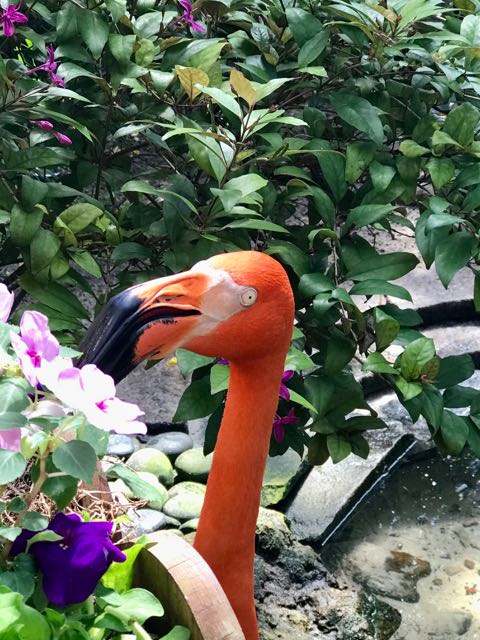
This guy seemed to be enjoying chomping on the wood railing.
And now, more pretty butterflies.
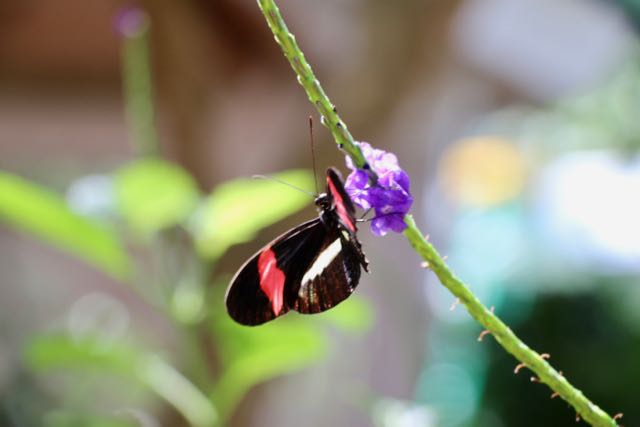
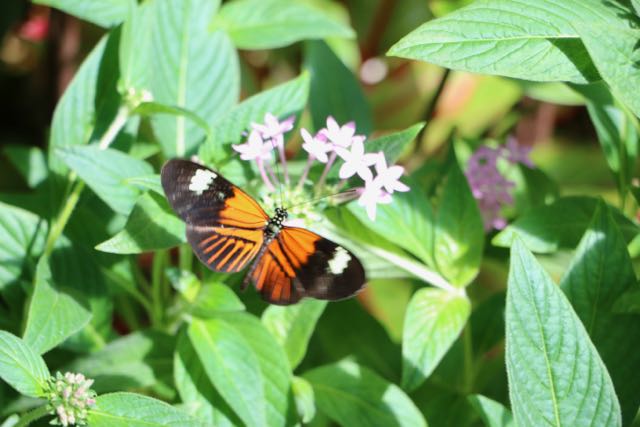
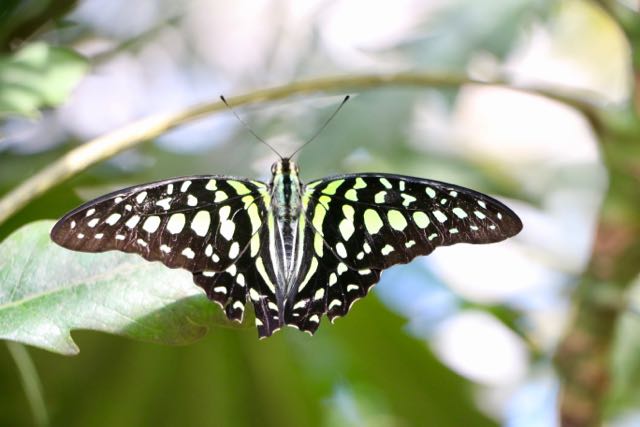
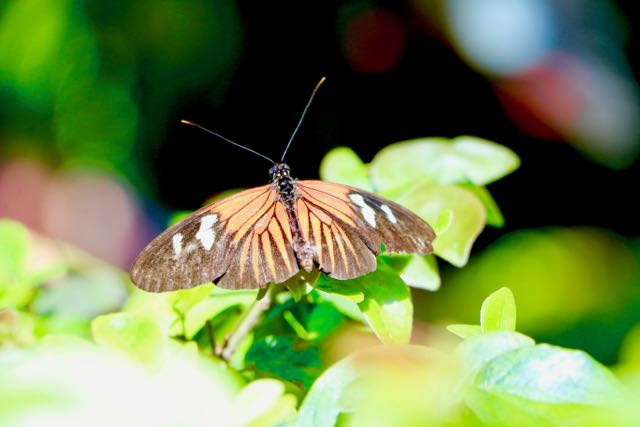
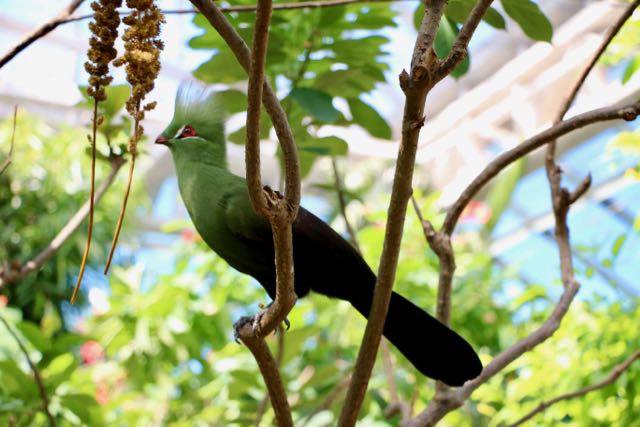
Well, hello there little fella.
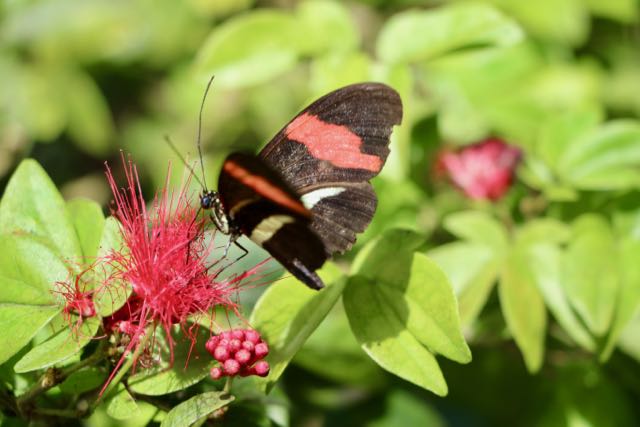

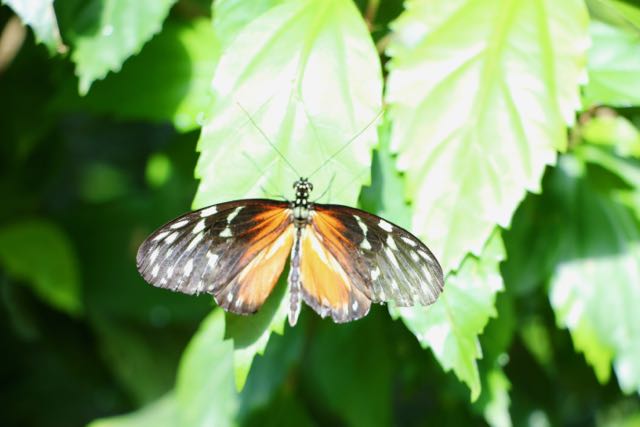
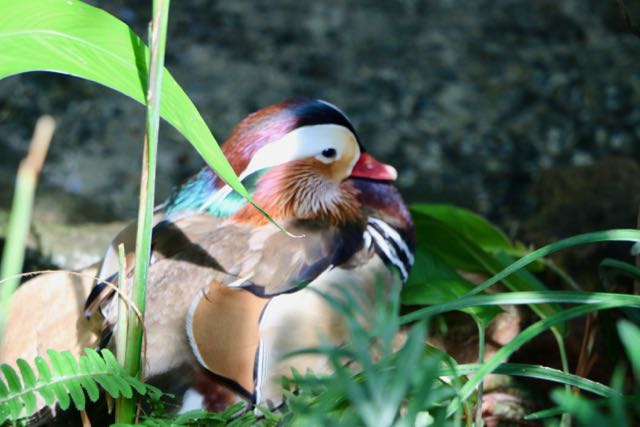
Found tucked away – look at all those colors!

Another look at a closed Blue Morpho.
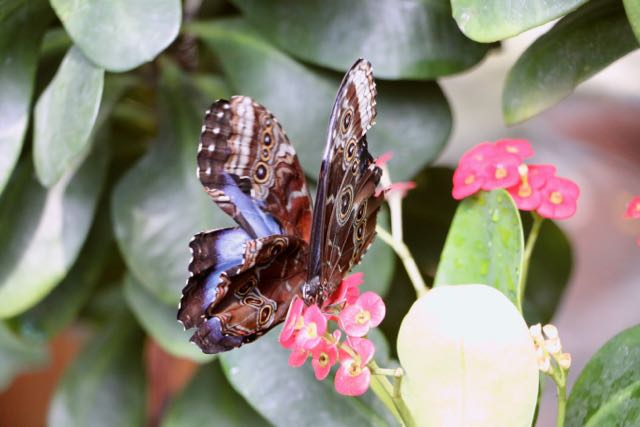
Is it ready to take off? Will I be quick enough on the shutter release?! Will I be able to track it?!
And now! Drumroll, please! I give you THE BLUE MORPHO!
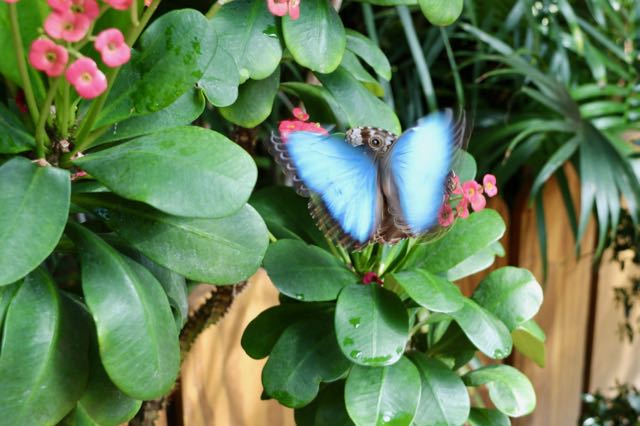
Ta-da!
